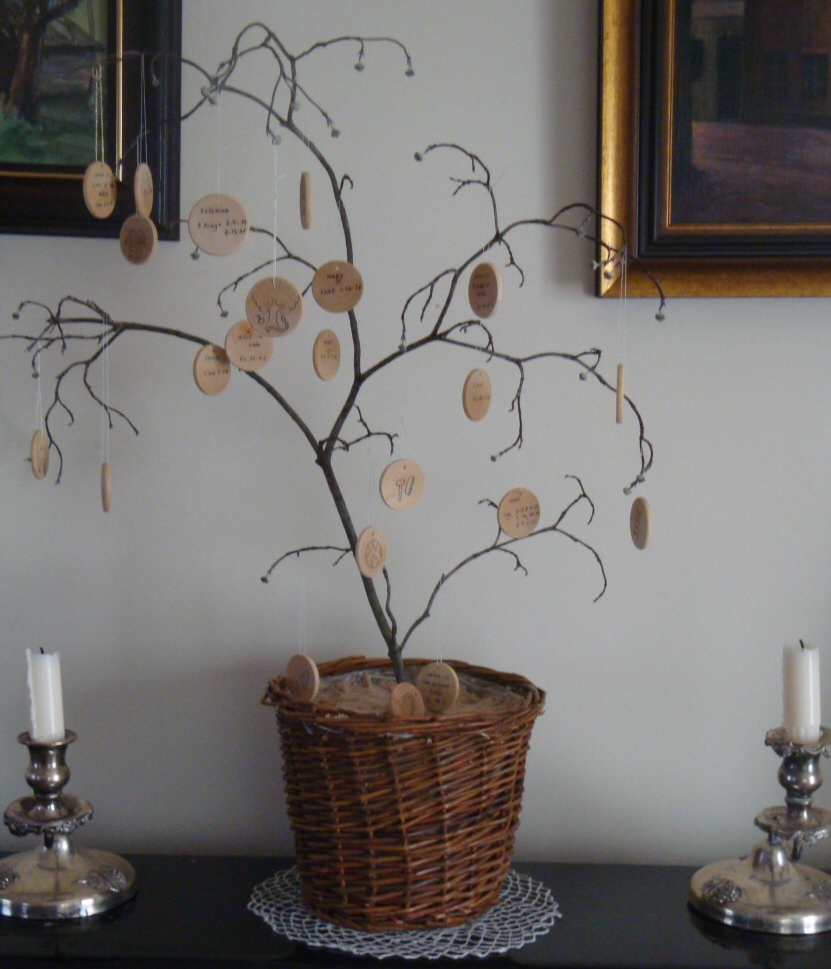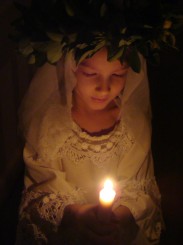The Catechism of the Catholic Church says: “Prayer is the life of the new heart. It ought to animate us at every moment… But we cannot pray ‘at all times’ if we do not pray at specific times, consciously willing it” (CCC 2697). We come before the Lord with a desire for ‘a new heart’ when we find time for prayer throughout our day. The Church invites us to pray in many different ways. We can recite the Rosary, pray the liturgy of the hours, learn about the lives of the saints, celebrate the liturgical year through feast days, lift up our hearts in song or silence, and above all participate in the celebration of the Holy Eucharist. If we take time to pray at ‘specific times’, our home will be filled with prayer at ‘all times’.
The season of Advent (from the Latin word “adventus”, meaning “coming”) is the time of preparation for the birth of Christ. It is a time of longing and waiting for his ‘coming’. It should be a time filled with joy when we ponder the gift of God’s love, open our hearts to receive and open our hands to give. Advent begins the liturgical year. It begins on the Sunday closest to the last day in November.
Advent traditions are numerous. We do not always know their exact origin, but they have been lived in the hearts of the faithful. If traditions are lived and understood, they can bring families closer to Christ and transform the hearts of those who participate in them. How can we introduce some Advent traditions into our families this Advent season?
Advent Wreath – The wreath is circular and made of evergreens symbolizing the eternity of God. Seeds and fruit we may place on the wreath represent life and resurrection. There are four candles on the wreath, each representing one week of Advent. The three purple candles stand for prayer and penance. The rose candle is lit on the third Sunday (the “Gaudete Sunday”) and it symbolizes joy – “gaudium” in Latin – as we draw closer to the birth of Christ. The light that the wreath brings symbolizes Christ Himself – our Light. Take a family walk on the first Sunday of Advent and collect everything you will need for the Advent wreath. Make it together as a family and talk with your children about the rich symbolism. Have the wreath blessed by a priest, or read a family blessing of the wreath at home. Place it in a visible spot where your family gathers often. Light it during your evening prayer or at meal times.
Nativity Scene – Saint Francis of Assisi began the custom of the nativity scenes when he celebrated Christmas with his brothers at Greccio in 1223 with a Bethlehem scene which included live animals. This tradition quickly spread and people began to construct their own nativity scenes in their homes. Children take a great joy in helping to set up a nativity scene. The crèche may be made from various materials. Simplicity and beauty go often hand in hand. You may set up your entire scene at the beginning of Advent, leaving the crib empty for the Christ Child to arrive on Christmas Eve. Or you may set up the scene slowly, day by day. We like to hide one figure (an animal, or a branch…) each day of Advent, have our children search for it, and then place it around the manger. Joseph and Mary arrive to Bethlehem last. On Christmas Eve, the youngest child finds a small golden package under the Christmas tree with the figure of the Baby Jesus. We place it together in our crèche. Mary and Joseph can also ‘travel’ to Bethlehem, as they move slowly across your room every day until they reach the cave.
Advent Carols – The tradition of caroling is owed to Saint Francis as well. Children especially enjoy the beauty and joy expressed in Christmas Carols. However, Christmas carols should be sung at Christmas. During Advent, we are still waiting. Our music should express this waiting and longing for the Messiah. There are many beautiful Advent Hymns. Learn one new hymn every week of Advent with your family. Your waiting will be rewarded with a profound joy at Christmas time. [Editor’s note: Advent hymns can be found in your parish hymnal. For an online list of popular and lesser-known Advent hymns, see The Cyber Hymnal or Hymns of Advent.]
Jesse Tree – Jesse Tree is an old tradition depicting the relationship of Jesus with Jesse and other biblical figures who were the ancestors of Jesus. Jesse was the father of King David. He is often looked upon as the first person in the genealogy of Jesus. For your own Jesse Tree, a branch can be placed into a pot or a large vase at the beginning of Advent and every day a new ornament can be hung onto it.

These ornaments represent the individual figures from the two Testaments. They can be made out of paper, felt, clay, wood, or other materials. As the children place the ornaments onto the branch, the father of the family can read an appropriate Scripture passage that talks about the given ancestor of Jesus. There are many passages that can be chosen and many symbols that can represent various figures. Each family can create their own list of figures and their symbols. [Editor’s note: this webpage shows one example of Jesse tree ornaments; this webpage provides suggested readings and symbols for each of the Jesse tree ornaments.]
The Crib for the Christ Child – A small wooden crib can be displayed somewhere in your home. This empty crib can be filled with a new piece of straw every day for acts of kindness and small sacrifices. Encourage your children to notice goodness in others, instead of focusing on their own deeds and accomplishments. By the end of Advent, the crib should be filled with straw. On Christmas Eve, children can place a small figure of Baby Jesus in his soft bed of hay.
Advent Angels – At the beginning of Advent each family member can blindly pick a name of another member of the family and become his or her Advent angel. Prayers, sacrifices and acts of kindness can be offered and exercised daily. During the Christmas season small homemade gifts can be exchanged between the ‘angels’. This prolongs the joy of Christmas, encourages creativity and teaches children (and adults) to discover unique talents they can share with others.
Preparing our homes – Our homes should reflect our readiness for Christ’s birth. Clean your home together, simplify, share. Children can help to prepare a box for the poor and the lonely. You can donate extra clothing and household items, bake cookies together and share them or save them for the joyous time of Christmas. Begin working on Christmas cards and gifts early in Advent so that you can ‘rest your heart’ during the final days of Advent.
Preparing our hearts – Just as we prepare our homes, we should prepare our hearts. This is the time for a frequent sacrament of reconciliation, for a longer family prayer, and for lots of Advent reading together. This is the time when family can draw closer to the mystery of Christ’s Incarnation.
Celebrating the saints’ feast days – There are many beautiful feast days during Advent to celebrate. I will mention just a few. You can honor Saint Nicholas (December 6) by learning about his life. Prepare a play about him, or learn a hymn in his honor. Recalling the legend of the three daughters, place your shoes by the fireplace on the eve of the feast and wait for the saint’s ‘visit’. (In many European countries, Saint Nicholas visits families in person. He joins them for family prayers, blesses the children and leaves oranges, nuts and golden coins for each one of them. Children write letters to the Christ Child and deliver them through Saint Nicholas. These letters are filled with the children’s thanks for the past year and with their hopes for the year to come). You can make candles on the feast of Saint Ambrose (December 7), the patron saint of candle makers. While remembering our Mother Mary, you can also prepare a small gift for an expectant mother you know on the feast of the Immaculate Conception (December 8).

Decorate your house with lights on the Feast of Saint Lucy (December 13), whose name means ‘light’. According to an old Swedish custom, dress your oldest daughter in white and let her wake up the family with a candle-lit breakfast. Remember our Lady of Guadalupe with a Mexican meal, roses or poinsettias. Craft with your children, sing, celebrate, eat your meals together, find time… Prepare your homes and hearts for Christ!
An old German Advent Carol sings about the Christ Child carried under Mary’s heart as she wanders through the wood where nothing grew for seven years. As she walks through the forest, roses begin to bloom everywhere. May we carry Christ with Mary this Advent season. And may the roses bloom!
About the author
Maruška Healy, originally from the Czech Republic, is a graduate of the International Theological Institute in Gaming, Austria. She and her husband currently reside in Maryland where they homeschool their children.








